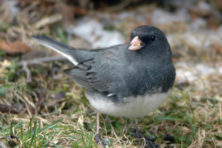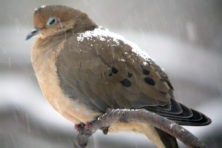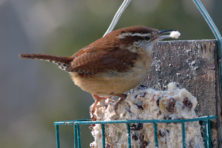Door to Nature: Christmas Bird Counts
- Share
- Tweet
- Pin
- Share
This year was my 47th consecutive year of organizing Door County Christmas bird counts. My first one was in 1972: the year Roy and I were married. Roy worked at The Ridges Sanctuary as well as teaching full time in several schools. I had a part-time job working as a dental hygienist in Sister Bay.
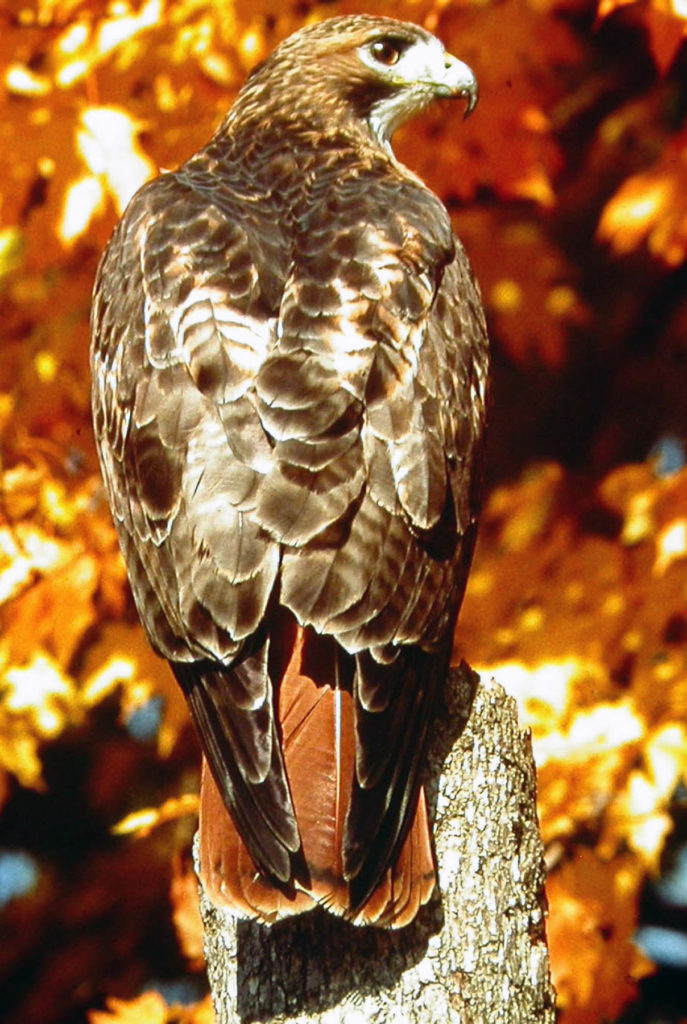
Red-tailed hawks are here all year and can be seen in the open country as well as at the edges of woods. They have been seen on nearly every Christmas bird count. Submitted photos.
Many of my patients knew of Roy through his teaching and his weekly nature column in the Door County Advocate. As the count time grew closer, I learned which of my dental patients were interested in birds and could identify those coming to their feeders. It was then that I asked some of them to participate in the count.
The instructions were to list birds seen at the feeders a few days before the count, and on the count day, to list each species seen and the greatest number seen at one time. If two cardinals were observed early in the morning and later four were seen, you crossed out the two and wrote four as the total number. Chickadees were a bit harder to count because they flitted in and out so rapidly.
I apparently did not explain very well how to record the numbers on the day of the count to one nice woman who offered to help. When I called her the following day to record her totals, she said there were 179 chickadees! She added every one she saw during the day, not understanding that she was to count only the highest number at one time. I thanked her and wrote down 10 chickadees for her feeder total.
Each year the count’s 15-mile-diameter circle is canvassed by field parties and by people just staying home and watching their feeders. The same circle is used every year to maintain consistency. Not every field observer can help each year, so I must first learn who can participate and then assign zones to each field party. If an unusual species or a type that is a lone individual, such as a snowy owl or bald eagle, is seen near the border of a field-party territory, I ask the group’s recorder to note exactly the time and place of the observance. If a group in the next zone sees that same species, it also records the time and place so we can determine whether it may have been the same bird.
Weather conditions have a huge impact on bird activity and abundance. This year’s counts gave us calm, mild weather, which was nice for the people working to count birds in the open countryside. However, the feeder watchers said it was very quiet, and not many species were seen. In open winters such as the present one, there is much natural food available to the birds. They don’t have to rely on our feeder handouts as they would if there was deep snow and howling winds.
Another factor in the quantity and variety of bird species we may see here in winter is the seed production of trees in the far north. Many species that nest in Canada may stay in their home breeding territories if the food they need is adequate. When trees do not produce enough seeds, many birds will head south to find the food that keeps them alive through the cold months.
About a month ago, an email came in about winter movements of evening grosbeaks. We all hope to see them on our Christmas counts, but so far none have turned up in the southern half of Door County. A good friend, Beth Bartoli, had 18 on her feeders on the Saturday when we did the Sturgeon Bay count. She lives about a mile west of Newport State Park, where this species has been seen since early November. Another friend on Washington Island, Melody Walsh, had evening grosbeaks as early as October 29, and she saw a pine grosbeak on November 14. Pine siskins were seen in low numbers, as well as some common redpolls, but so far this appears to be a season of fewer migrating finches.
I remember that in some winters, we didn’t get large numbers of common redpolls until February. Perhaps a good seed supply up north was exhausted by record-high numbers of these birds, and they then had to travel south to find more food.
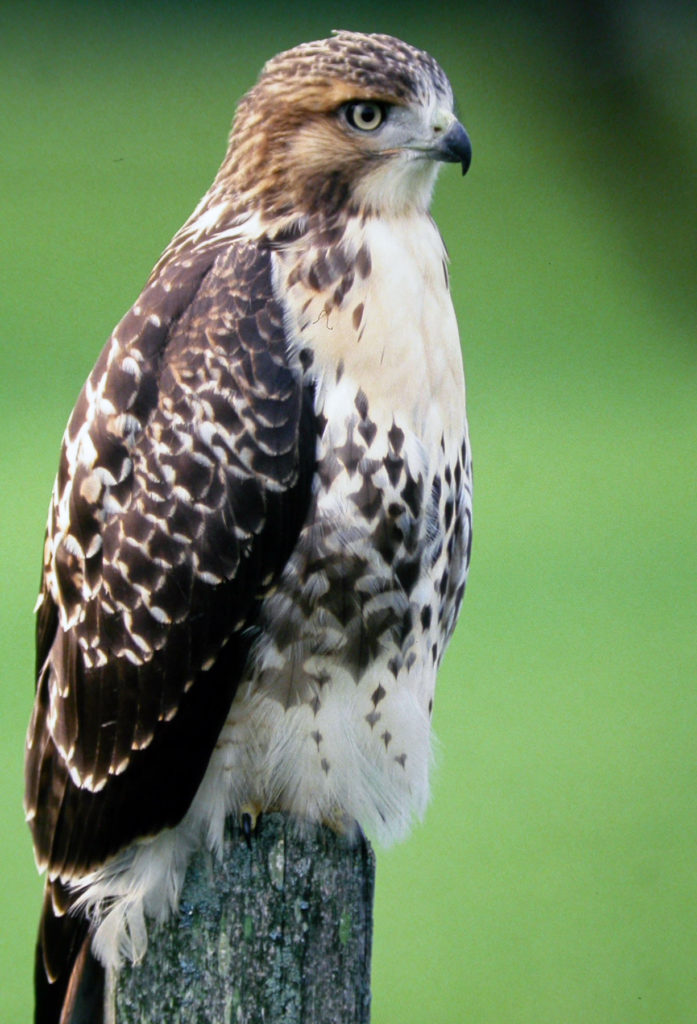
Here is the front view of a red-tailed hawk showing its belly band of darker feathers.
Another factor in winter birds moving into our area from the far north is their breeding success. If conditions were not good for their nesting, there will not be as many individuals to eat up the seeds on their native trees. Some years the snowy owls come down to the Upper Midwest in great numbers due to a large immature population and a shortage of their favorite food, the lemmings. There have been some years when most snowy owls seen were young ones, and many were starving when captured or were found dead.
Our count this year on Saturday, Dec. 15, had calm winds and sunny weather and a snow cover of only an inch. In areas where we had been seeing wild turkeys eating corn in cutover fields, few were seen. It seemed like they knew we were counting them, and they stayed hidden in the woods. Back in the mid-1990s, after wild turkeys had been released in several parts of the county, Roy and I saw more than 200 in one flock along County K in southern Door.
These counts are not meant to be a contest to see who can record the greatest number of species or birds. This annual event is one of the greatest citizen-science projects and the longest running of any known in our country. They have been going on since the year 1900. That’s 119 straight years!
The counts are conducted to determine the winter avian population to see what trends are occurring in our wild birds throughout the continent. We thank the many volunteers who help with these important surveys, and we have fun doing it!

